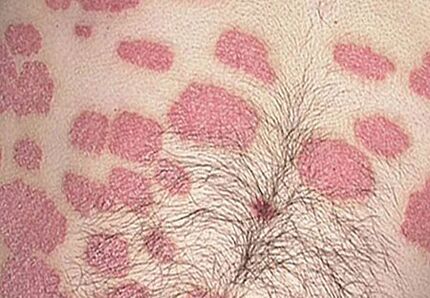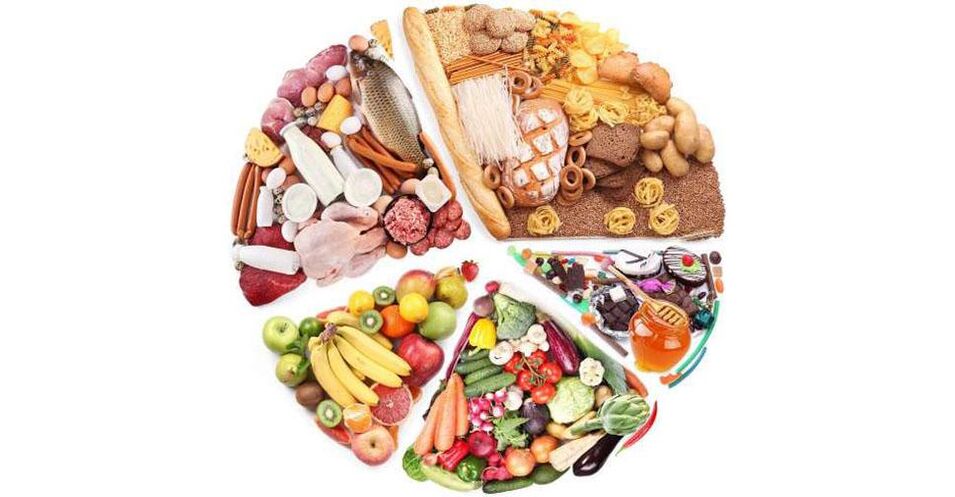What is it? Psoriasis is a skin disease of a non -infectious nature, so it is impossible to become infected. It not only affects the skin, but also has a negative effect throughout the body as a whole. It is characterized by a chronic course with periods of irritation and remissions.
The disease is caused by their body's immune cells, that is, it is an autoimmune disease. Raising from the bottom of the skin in the upper layers, these cells provoke inflammation, excessive division of epidermis cells, leading to excessive increase, the appearance of young small capillaries.
From the outside, it looks like the formation of red or red spots - psoriatic plates.
The first signs and symptoms of psoriasis

Since psoriasis - a systemic disease affecting all body systems - the patient suffers from general weakness, rapid fatigue.
The main symptom of the initial phase of psoriasis is psoriatic rashes and plaques, however, accompanies a person with further development of the disease.
They arise due to the accelerated uncontrolled separation of cells located in the upper layer of the skin-kraratinocytes. The cells involved form, and the skin in these areas thickens, gains red due to the expanded formation of new capillaries. This leads to slight bleeding of points for any, even easy, tile damage.
The surface of the tiles is often covered with a gray raid, similar to paraffin. Even the term "paraffin lakes" was formed. This plaque consists of dead epithelial cells that accumulate on the surface of the plates due to the damaged rejection process.
Spots can reach quite large sizes, join one -another. They are hot to touch, often accompanied by severe itching. Combinations can lead to infection.
Over time, the nails begin to change. Their surface becomes cut, pits appear, pink dots are visible under the nail plate - the accumulation of the juice, the nail turns yellow, thickens, takes the shape of bird claws. All this is due to a violation of nail food and blood circulation.
The nail bed is subject to excessive deterioration, which leads to the rejection of nail and loss. It often has a red border inflamed around the nails.
Small connections are affected by the disease and small joints - this is associated with pain and inflammation.
In addition to tiles, with psoriasis, the papules form on the skin - small (about 1 mm) prolonged formation that resembles a rash. It is often located on the elbows and knees, preserved even during the prayer period.
During improvement, the tiles begin to turn on from the middle, gain the shape of the rings and can disappear completely. The pigmented areas remain in their place.
Psoriasis in the head has the same symptoms as in the body. In this case, the hair structure does not change. The rashes also cover the adjacent areas of the skin - behind the ears, around the neck.
Types of psoriasis
According to the symptoms of the manifestation, the disease is divided into two types: pustular and non -pustular. There are several types of disease within these groups.
Forms of pustular psoriasis:
NO Pustule psoriasis:
Moreover, the following types of disease are distinguished:
Forms by severity:
Depending on the shape of the rashes, such types of psoriasis are distinguished:
Stages of development of psoriasis, symptoms

The first tiles appear in areas with dry skin and never occur where the skin is very wet, for example, armpit. First, the appearance of points can be seen on the inside of the elbows, below the knees, along the hair border on the head, as well as in places undergoing any damage or friction. Location is usually symmetrical.
Take such stages during the disease:
There are no special tests to create a diagnosis. Diagnosis is made on the basis of characteristic external traits. One of these signs will be the appearance of bleeding when the plates contact, so bloody dew.
Another specific sign of psoriasis will be the presence of a pale border around a new papule, still not covered with scales. This is what the vascular reaction of the skin looks like, which means the progression of the disease.
In severe forms of the disease, a blood appearance can change. Signs of the flowing inflammatory process appear. In some cases, you need to make a biopsy to exclude other skin diseases and confirm the presence of psoriasis.
Effective treatment of psoriasis
In the treatment of psoriasis, both local remedies and internal treatment, physiotherapy and SPA are used.
In the initial mild course of the disease, medicines are used in the form of ointments. First, ointments and creams of plain composition are used, then go to hormone -containing ointments. Psoriasis cream should only be applied to tiles and dots.
Ointment by psoriasis: a summary of hormonal and non -hormonal agents
With the average and severe course of the disease, internal products that affect the whole body are used but give the best results, are used. This group includes vitamin A, immunosuppressants, cytostatics.
Physiotherapists cause tangible relief to patients with psoriasis, can inhibit the development of the disease and sometimes replace the use of some medicines.
UV radiation (phototherapy), laser, ultrasound and magnetotherapy, hyperthermia, electrophoresis, electrophoresis are used.
Psoriasis is capable of gaining resistance to the treatment used over time, so it is recommended to change the methods (treatment rotation) from time to time.
Diet with psoriasis

Nutrition should help regulate metabolism and prevent the appearance or deterioration of skin symptoms. Since almost all patients have a violation of lipid metabolism, preference should be given to low products.
Special fire diet and others gained widespread fame.
When compiling a diet, you should try to respect some simple rules:
Compliance with these simple rules will help avoid worsening psoriasis and independently compose a therapeutic diet.























